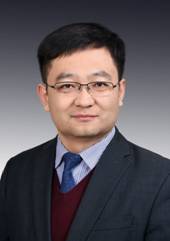 报告题目:Magnetoelectric Coupling Materials and Devices
报告题目:Magnetoelectric Coupling Materials and Devices
报告人:刘明教授,西安交通大学
时间:2019年10月11日(星期五)下午15:00
地点:材料馆A323
报告人简介:
刘明博士,2010年博士毕业于美国东北大学电子与计算机工程系,同年获“阿贡学者”资助,在美国阿贡国家实验室开展博士后工作。2013年9月,入职西安交通大学电信学院担任教授。目前担任西安交通大学研究生院副院长,西安市政协委员。刘明博士一直从事磁电耦合功能材料与器件的研究,迄今为止,在国际知名期刊(Nature Communications,Advanced Materials,Advanced Functional Materials,ACS Nano,NPG Asia Materials,IEEE系列等)发表SCI论文120余篇,特别近两年,带领团队以通讯作者发表影响因子大于12的文章十三篇,包括Nat. Commun. 1篇(被Editor选为Highlight),Adv. Mater. 5篇(其中三篇被选为封面),Adv. Funct. Mater. 2篇(均被选为封面),ACS Nano 4篇等。论文引用超过3700次,H因子32,第一作者论文单篇最高引用240次并被ESI收录。应Wiley出版社邀请,撰写英文专著一部,申请或授权发明专利16项。应邀在IEEE Intermag、MMM等顶级国际学术会议上担任分会主席14次,做学术邀请报告30余次,口头报告和海报50余次,同时担任SCI期刊Physics Letter A, Scientific Reports和JMIHI的编委,Sensors和的客座编委,担任陕西宇航学会电子信息专委会副主任委员,机械工程学会微纳制造分会常务理事,中国电子学会高级会员。主持‘先进电子材料’重点研发计划子课题、教育部装发联合基金、基金委面上项目等10余项基金。主页:http://mliu.xjtu.edu.cn/publications/
报告摘要:
One of the central challenges in realizing magnetoelectric (ME) devices lies in finding a deterministic way to modulate magnetism in integrated circuits with a circuit-operation voltage.Ionic liquid (IL) gating on magnetic thin films withabundantelectronic, chemical and magnetic interactions at the interface has become an emerging technology for controlling magnetism in a fast, compact and energy-efficient way. Compared with conventional strain effectdominated piezo/ferroelectric layer multiferroics, IL gating method has advantages like small gating voltage (Vg<5 V), easy-to-integration and compatibility with varied substrates such as Si, flexible substrates etc. Inadditional, unlike the oxide structures require a high temperature to overcome the oxidation energy barrier, the IL gating control process can be operated at room temperature, suitable for applications in room temperature environment. Here, we will summarize our recent progresses of IL gating control of magnetism in varied magnetic heterostructures, as well as in dfferent manners.[1-5]As IL gating process, proven to be a truly powerful and compatible gating method, enables giant ME tunability in different heterostructures and provides a tremendous potential in next generation of voltage-tunable spintronics/electronics.
1. S. Zhao, Z. Zhou, B. Peng, M. Zhu, M. Feng, Q. Yang, Y. Yan, W. Ren, Z.G. Ye, and Y. Liu.M. Liu, Adv. Mater.29,(2017)
2. Q. Yang, L. Wang, Z. Zhou, S. Zhao, G. Dong, Y. Chen, T. Min, M. Liu, Nature Communication, 9, 991 (2018)
3. S. Zhao, L. Wang, Z. Zhou, C. Li, G. Dong, L. Zhang, B. Peng, T. Min, Z. Hu, J. Ma, W. Ren, Z.-G. Ye, W. Chen, P. Yu, C-W Nan, M. Liu,Adv. Mater.DOI: 10.1002/adma.201801639 (2018)
4. M. Guan, L. Wang, S. Zhao, Z. Zhou*, G. Dong, W. Su, T. Min, J. Ma, Z. Hu, W. Ren, Z.-G. Ye, C.-W. Nan, M. Liu, Adv. Mater.DOI: 10.1002/adma.201802902 (2018)
5. Q. Yang, Z. Zhou, L. Wang, H. Zhang, Y. Cheng, Z. Hu, B. Peng, and M. Liu,Adv. Mater., 30, 1800449, (2018)
